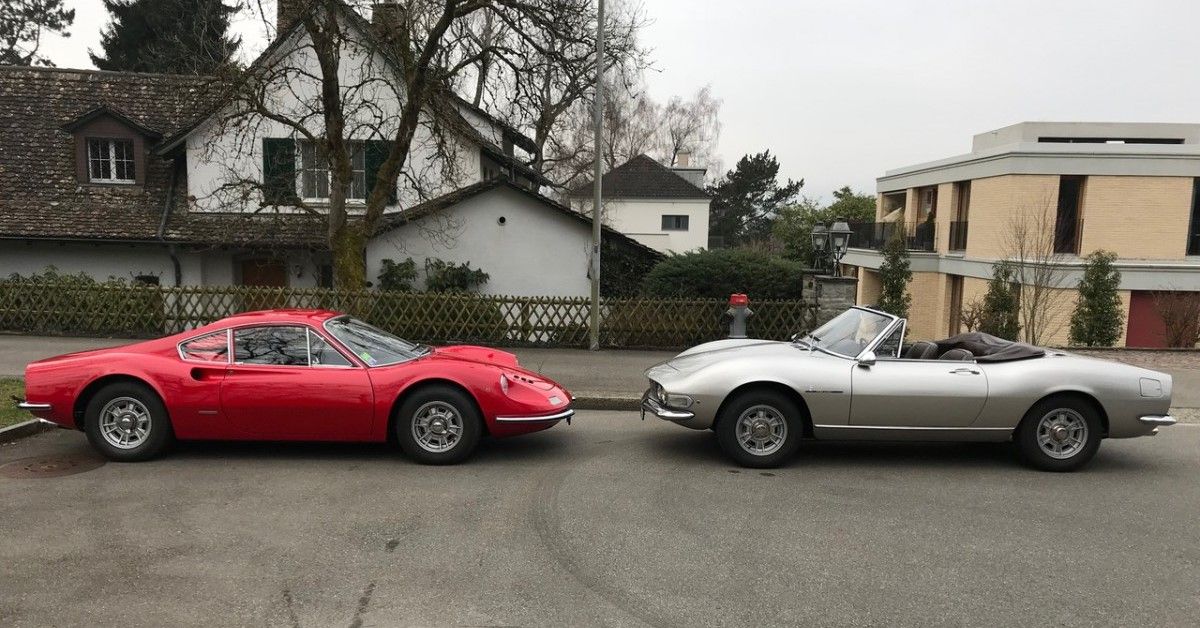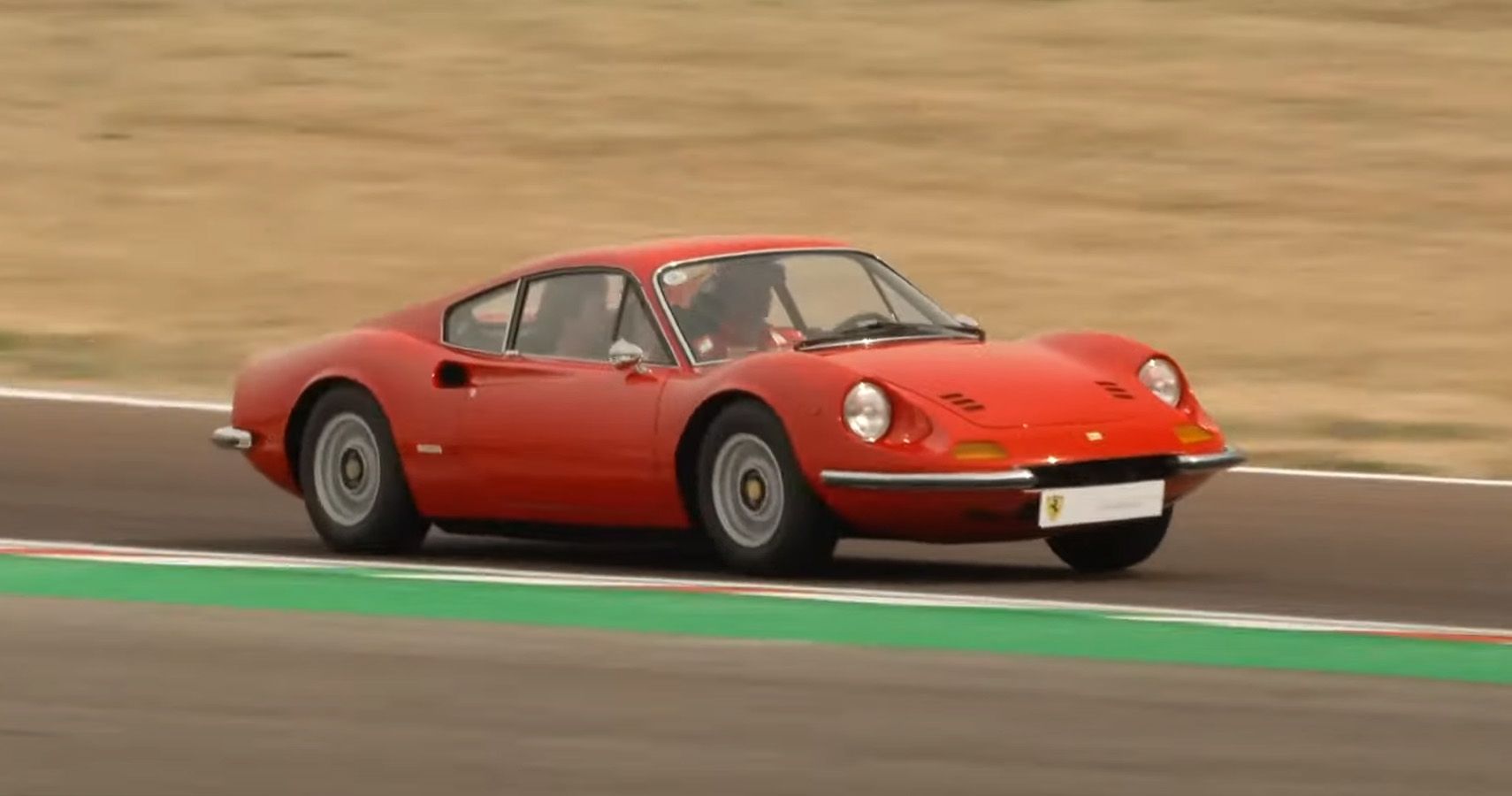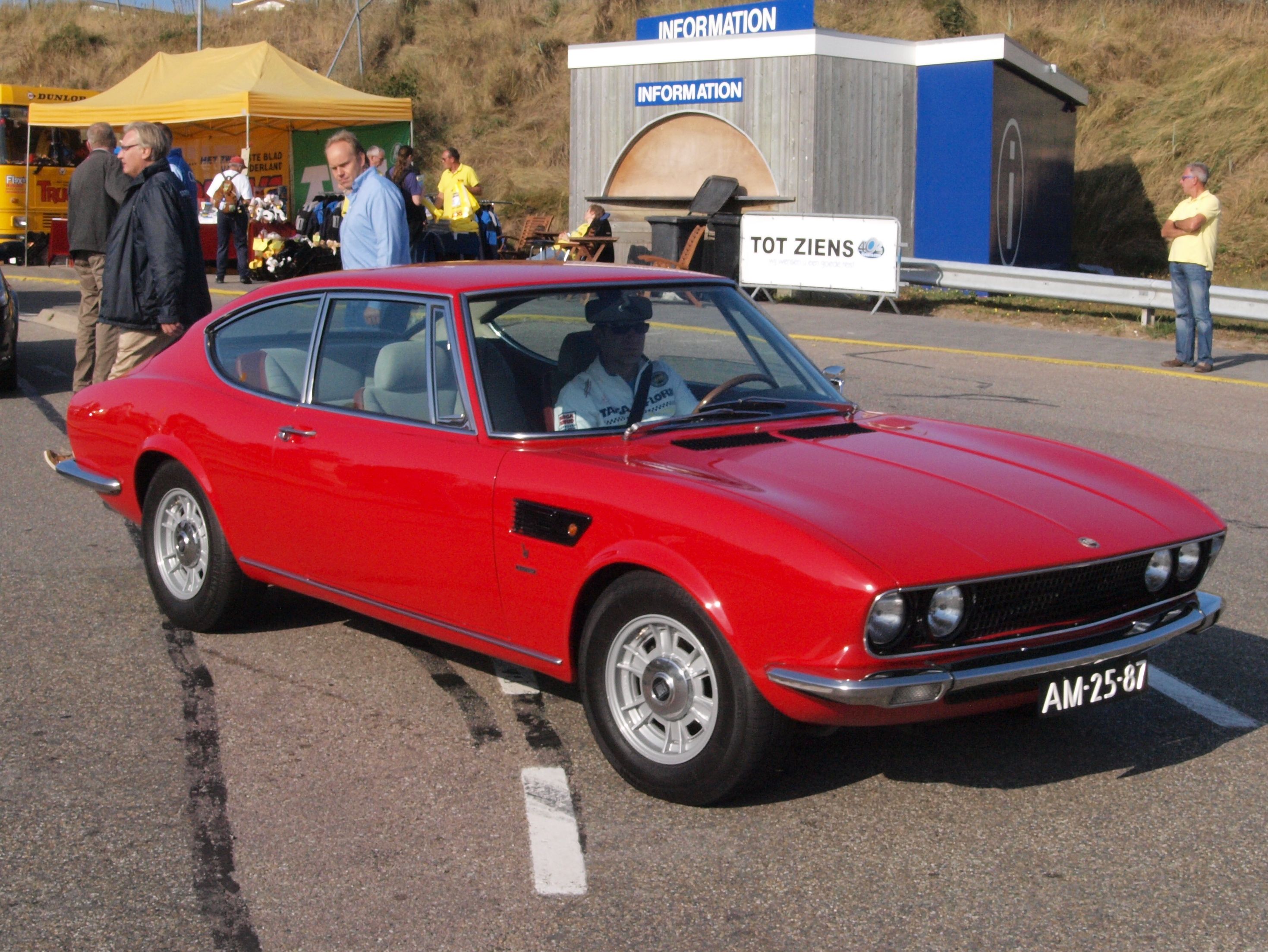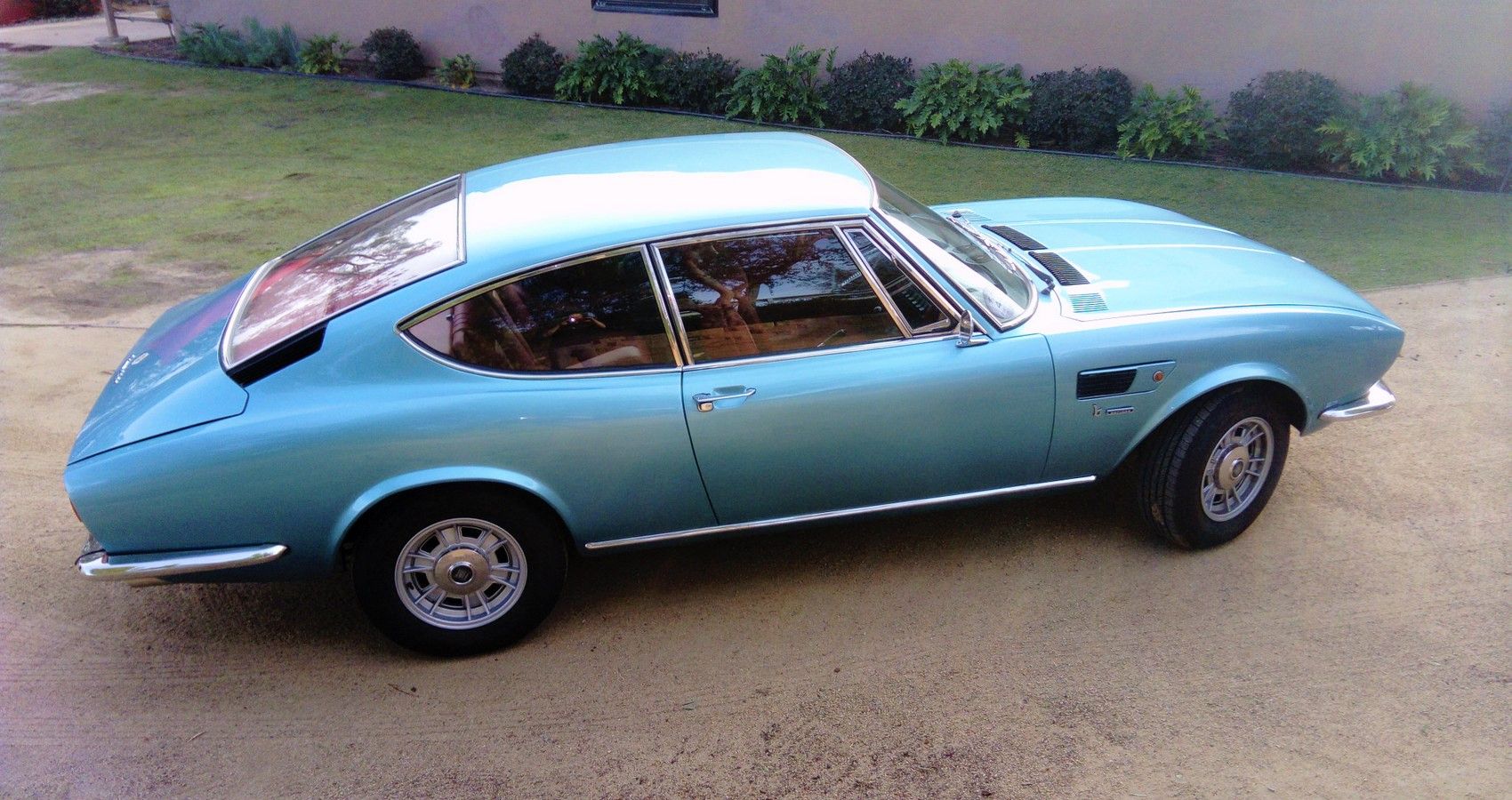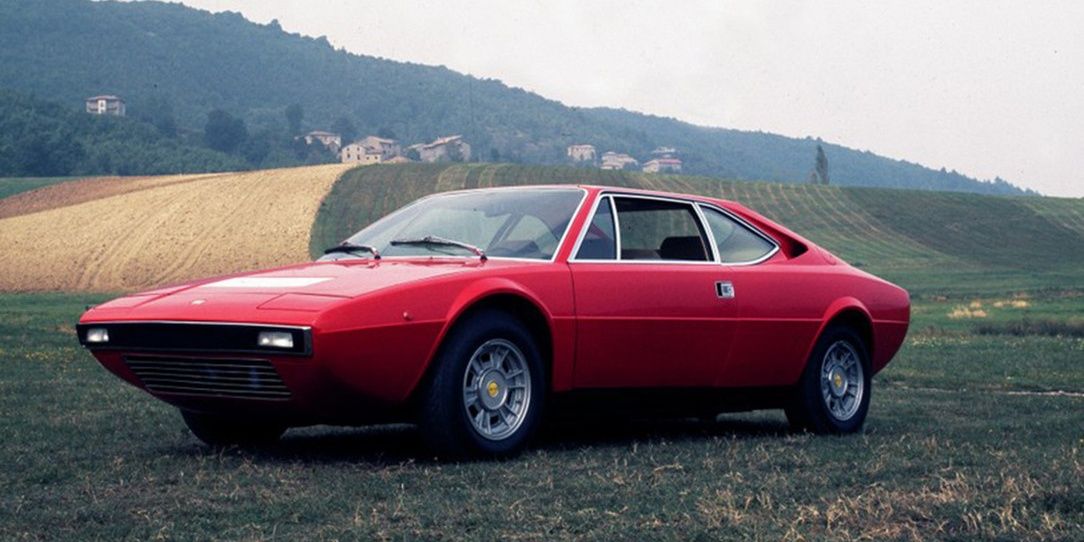How important is the automaker badge to you? For the majority, chances are it is a pretty essential factor in either a used or new car purchase – it can influence heavily based on how you perceive the reliability will be or give a clue as to how expensive it might be to maintain or insure.
Inevitably there will be many exceptions too, of course, a lot of people buy a car based on its individual merit and are happy to change to another car from a different carmaker based on another specific car’s merit.
If you buy a Mazda, you’re getting reliability as standard, if it’s an Alfa Romeo it won’t be reliable, but it will set your heart on fire. The thing is, the front-wheel-drive Alfa Romeo 159 pales in comparison with the Mazda RX-7, so it’s not a hard-and-fast rule.
When it comes to Fiat and Ferrari, there was also an exception to the rule – a rather big one – and it concerns two cars that share a name, but it isn’t all that clear why.
It turns out that sometimes, you can have your cake and eat it if you are prepared to make some concessions.
The Dino Is Two Different Cars, Based On Just One Engine
If you have ever wondered which one is better, the Ferrari or Fiat Dino; then you need to see the two cars parked up beside one another.
For the first generation - because there were various – the two cars came out around 1966 and on the outside were both beautifully-styled Italian sports cars, plus they both shared the same engine, but their remits and demographic were distinct.
Firstly, the mid-engined junior sports car, the Ferrari Dino 206 was a Ferrari with a new badge (the Dino badge) and the Fiat was a front-engined grand tourer.
The thing that bonded these two manufacturers together was the Dino engine in fact – initially, a 2-liter V6 making 180 hp (160 according to Fiat) and which was identical regardless of under which hood it worked.
This partnership was the result of Ferrari needing to make 500 engines a year (effectively mass-produce) to homologate a new 2.0-liter V6 it wanted to use in Formula 2 racing.
It had already been using smaller iterations of the small engine to race with but had never used a V6 outside of motorsport before the Ferrari Dino road car.
The Engine To Carry On A Legacy: The Dino Engine
Enzo Ferrari’s son Alfredo came up with the idea for a small V6 engine for racing before his death at the age of 24 due to illness.
In honor of his son who had passed away, the engine which was eventually assembled for racing from 1959 onwards was innovative for its unusual 65-degree angle, which helped with the design and packaging of the baby unit for better performance.
Eventually, the 2-liter version was proposed which would need to be produced in 500 examples a year and Ferrari turned to Fiat for help.
This resulted in Fiat being able to use the engine in a new GT road car and Ferrari bringing out a new model, a first for Ferrari being mid-engined and a V6 as opposed to a V12.
As it was a lower-power and smaller engine, Enzo decided to create the Dino road car brand, so it didn’t weaken or dilute the main Ferrari brand.
Little did they know, that it would be a successful engine that would eventually live for many years in different forms and ultimately go on to power the Ferrari 360 as a V8.
The Fiat Dino Is A Cheaper Ferrari With The Same Performance
Fiat or Ferrari’s 2-liter V6 wasn’t the only tiny 6-cylinder engine – years later, the Mazda MX-3 featured a 1.8-liter V6 also.
What the Mazda didn’t have though was (good for the time) luxury or image: back in 1966 when the Fiat and Ferrari were unveiled, the Fiat – available as a coupe or a soft-top – would feature all-round disc brakes, electric windows, leather interior, and more, plus that exterior styling which was top-notch (by Bertone for the coupe and Pininfarina for the drop-top).
Both cars were rear-wheel drive, but the Fiat offered more space for passengers (2+2 for the coupe) at the expense of more weight and a less sophisticated chassis and suspension set-up.
A manual 5-speed was standard in both the Fiat and the Ferrari.
For performance, the Ferrari 206 GT – the first generation of the Dino line – would reach 146 mph, passing 60 mph in around 5.8 seconds (the Fiat Spider which was slightly lighter at 2700 lb versus 3000 lb for the coupe took just over 8 seconds).
Both cars got an upgrade to the newer 2400 Dino engine in 1969, this was a 2.4-liter engine now with power up to around 195 hp for the Ferrari Dino (now called 246 GT) and 180 hp for the Fiat Dino (now called the Fiat Dino 2400).
The thing is, this engine was now a cast-iron unit instead of alloy and in addition, the Ferrari car also became steel rather than aluminum, so the car became heavier, not gaining much of a performance boost.
The Ferrari Dino And Fiat Dino Are Both Equal, And Completely Different
So in summary, the Fiat Dino came to be because of an engine production run that Ferrari had asked Fiat to run, whereby Fiat could release a new GT car and Ferrari could not only compete in racing with the engine but also release a new, small and more down-market car under a different brand.
The Fiat would cost less than Ferrari’s Dino but offer the same engine in a different type of car designed for traveling in luxury instead of being a more focused sports car.
Fiat’s Dino would finish production by 1973, but the other Dino from Ferrari would gain a V8 version of that famous engine in 2-liter or 2.9-liter formats, making 170 hp or 255 hp respectively and featuring in the new Dino 208 GT4 and 308 GT4.
Ferrari’s badge would also now be featured on the Dino from 1977, finally making it the Ferrari it always wanted to be.
Styling was by Bertone this time and was nothing like before, with sharp angles and styling much more in line with where Lamborghini and Pantera were heading, for example.
After this, the engine would continue on until it famously featured for a final time in the Ferrari 360 Challenge Stradale.
Nowadays, you can pick up a Fiat for under 100,000 dollars whereas a nice Ferrari Dino can run you for 250,000, but as always it depends on the condition, mileage, and where you look.
Either way, they are both Dinos, but they are not both Ferraris -unless you define a car by what is under the hood: then a Lancia Thema 8:32 is also a Ferrari.

